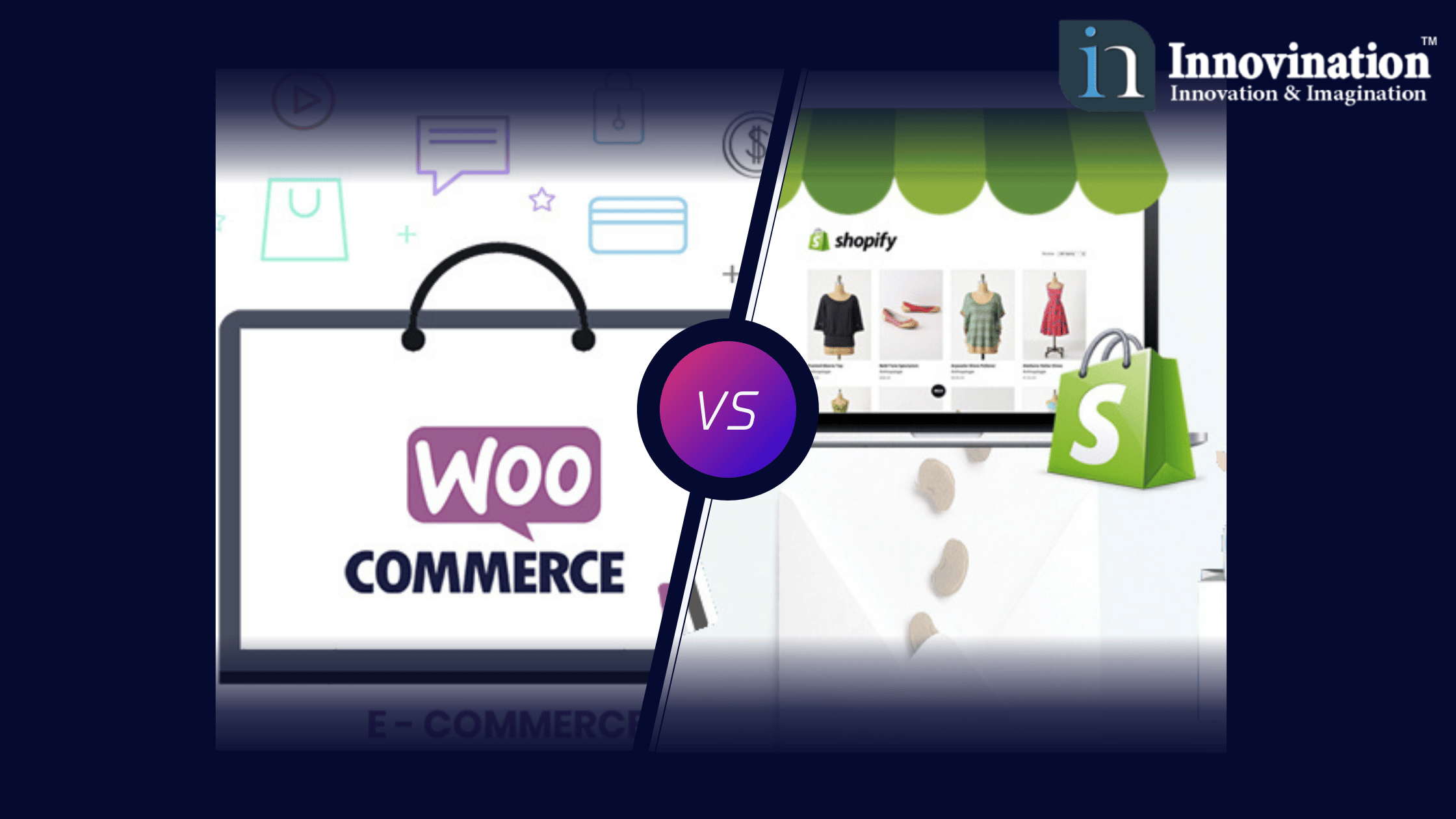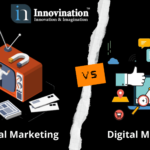Shopify vs WooCommerce: Best One to Choose in 2023
Updated at: January 18, 2023

The advantages of having an eCommerce website for your business are enormous. You might sell your products very well through your offline store and might think if there is any real need to create an eCommerce website. Or you might even consider any third-party platform like Amazon, or Flipkart to sell your products. But having a personal eCommerce website for your business is something that would add huge value to it.
Now, when you finally decide to have an eCommerce website, the biggest question is how to make one. In that case two of the biggest names are WooCommerce and Shopify. These two are the most widely used platforms across the world. As per the statistics, among 1 million top eCommerce websites, almost 29% are powered by WooCommerce and Shopify is just in the second place with 21%. From here you can understand how big they really are.
Here in this article, we are going to talk about both the platforms and get some in-depth views.
What is WooCommerce?
WooCommerce is an open-source plugin for WordPress. With WooCommerce you will be able to leverage the most powerful Content Management System (CMS) and use it to create and run your online store.
As WordPress is one of the most widely used website builders in the world, WooCommerce is also the most popular eCommerce platform.
WooCommerce comes with flexibility and a lot of features that help you to create customized websites and manage them smoothly. It allows you to personalize every part of your online store and even add custom extensions.
Just like every other thing, WooCommerce also has some pros and cons of it. Let’s take a look.
WooCommerce Pros –
- WooCommerce is an open-source, free plugin.
- WooCommerce is the most widely used eCommerce platform in the world.
- Very easy-to-use. Almost anybody can build their own website using this platform.
- Offers better customization and better control over your website.
- This platform is always up-to-date and provides optimal security.
- If you need additional features/plugins then they are available for purchase without the monthly subscription.
- Easy to set up on WordPress.
- WooCommerce has a highly interactive community with almost 123 million downloads.
- WooCommerce provides a professional aesthetic.
WooCommerce Cons –
- WooCommerce itself doesn’t provide the hosting solution, so you have to maintain your own hosting and take care of the security.
- Using too many extensions and features might slow down the overall website performance.
What is Shopify?
Shopify is a one-stop solution for all your eCommerce store building needs. Using this platform you can hose, create, and manage your whole eCommerce store very efficiently. You can create your store, manage inventory, and accept payments all from this single platform. It comes with a lot of flexibility and is super easy to use. After WooCommerce, Shopify is the second most used platform in the world.
Shopify Pros –
- Shopify has a reasonable price.
- Shopify offers an easy-to-use setup and use.
- You do not need high technical skills to create a basic Shopify store.
- Using Shopify, it takes just a few minutes to set up your store and make it run.
- Shopify takes care of your hosting & security.
- Shopify offers excellent 24×7 customer support.
- Shopify themes are highly mobile responsive.
- Drop shipping is very easier with Shopify.
- Shopify offers beautiful themes.
Shopify Cons –
- Shopify doesn’t give you much control over your site.
- Most of the plugins available for each small feature are a monthly subscription instead of a one-time purchase.
- The AMP feature is only available for the paid version.
- Moving the entire store to another platform from Shopify is not easy.
- As Shopify is not a Content Management System, creating a huge site with a lot of videos, and carousels will not work well.
What to Look for in an E-Commerce Platform?
When choosing an ecommerce platform, it is essential to consider the basic requirements such as scalability, payment options, customization options, customer support, mobile-friendliness, SEO, and security. However, depending on the unique needs of your business, you may also want to evaluate additional features like shipping, inventory management, invoicing, taxes, and dropshipping. In this article, we aim to provide a comprehensive comparison of Shopify and WooCommerce in terms of these basic requirements and additional features, to help you determine which platform is best suited for your online store’s needs.
When choosing an ecommerce platform, there are several key factors to consider to ensure that the platform meets the needs of your business.
Scalability:
It’s important to choose a platform that can grow with your business. As your sales increase, you’ll need a platform that can handle increased traffic and sales volume without crashing or slowing down.
Payment options:
Make sure that the platform offers a variety of payment options for customers, including credit card, PayPal, and other popular options.
Customization options:
Look for a platform that allows for customization of the design and layout of your store, as well as the ability to add custom functionality through plugins or apps.
Customer support:
Choose a platform that offers excellent customer support and resources, such as documentation and forums, to help you troubleshoot any issues that may arise.
Mobile-friendliness:
With an increasing number of customers shopping on mobile devices, it’s important to choose a platform that is mobile-friendly and optimized for small screens.
SEO:
Look for a platform that has built-in SEO capabilities, such as meta tags and clean URLs, to help improve your search engine rankings.
Security:
Choose a platform that takes security seriously and offers features such as SSL encryption to protect customer data.
Integrations:
Ensure the platform can integrate with other tools and software you use like accounting, email marketing, shipping, payment gateways, etc.
Ultimately, the best ecommerce platform for your business will depend on your specific needs and goals. It’s important to do your research and carefully evaluate the features and capabilities of different platforms before making a decision.
WooCommerce vs Shopify: Head on Comparison
Let us take a deeper look into the comparison between Shopify and WooCommerce.
Design & Template –
When talking about themes and templates, they both are very crucial for a website. An attractive website gains customers’ attention faster. And for an eCommerce website the more customers you get on your website, the higher the chance of better sales and revenue.
WooCommerce Design & Templates:
In terms of design and themes, WooCommerce takes a huge leap compared to Shopify. It opens up a completely new world full of features, attractive looks, and a lot of options to choose from. WooCommerce is set up in such a way that it can work with almost any theme available, so you can choose any WordPress theme for your website and make it work for your eCommerce site.
Shopify Design & Templates:
Each Shopify theme comes with its own set of variations. This means users have over 100 designs to choose from. And using liquid code and theme editor the themes can be easily changed from your Shopify admin area.
Shopify themes are highly mobile responsive and feature-rich. Although Shopify themes are fantastic there is a limitation on what is available in its theme store. On the contrary, WooCommerce offers a plethora of fantastic designs developed by a dynamic community of developers and freelancers.
Easy-to-Use –
People who are planning to start their eCommerce store are not always developers or skilled technical people. So, a platform that is easy to use lets the users make a website on their own. Let us check both Shopify and WooCommerce in terms of ease of use now.
WooCommerce Ease of Use:
WooCommerce is not a hosted plan so users have to take care of a lot of things on their own like installation, managing the updates, keeping back up, and ensuring that the store is secured.
To use WooCommerce, you need to install WordPress first, and it is a complex process. To install the WordPress, follow these steps –
- Get a domain name on WordPress
- Create a hosting account
- Install WordPress
- Install a WordPress theme
WooCommerce is super flexible to use and highly customizable. You can have full control over your site. You can add a lot of features and functionalities as per your need. There are almost 59000+ plugins that you can use to create your site.
Shopify Ease of Use:
Shopify being a fully hosted platform users do not need to worry about installing, updating, backup, or security. Setting up a store and managing it on Shopify is super easy. Shopify has a very user-friendly interface.
You can simply sign up in Shopify, follow some simple instructions, choose themes, upload products, and start selling. This whole process doesn’t require too many technicalities and is very smooth.
One drawback of Shopify is that it doesn’t give you full control over your website like WooCommerce. You can only design and use features provided by Shopify itself.
Features –
Although both WooCommerce and Shopify serve the same purpose of building eCommerce websites, they have some similarities and some dissimilarities themselves. They both work fine and give you everything that your site requires. Let’s take a look at some of the crucial features of both.
WooCommerce Features:
- WooCommerce is a WordPress plugin that is free to use.
- WooCommerce is an open-source platform, so you customize your website in whatever way you want.
- Thousands of designs are available (both paid and free)
- No hosting and subdomain included
- For multiple language support, you need 3rd party plugin
- You have to get your own SSL certificate
Shopify Features:
- Shopify is a subscription-based eCommerce platform.
- Being a closed platform, Shopify has limits on customization.
- 50+ designs are available with 10 free.
- Hosting and free subdomain are included in every plan.
- Multiple language support is available.
- A free SSL certificate is available.
Security –
When setting up an eCommerce business, security is a prime concern. An eCommerce website deals with a lot of personal information of clients like name, date of birth, phone number, email id, and most importantly their bank/card details. So, it is always necessary to have high-security features on your website. Let’s see how WooCommerce and Shopify perform in this section.
WooCommerce Security:
With WooCommerce, you are fully in charge of your security. To be more specific, you have to get your SSL certificate for the website, enable two-factor notification, set up a security plugin, be PCI compliant, and even some more things to do.
Shopify Security:
On the other hand, Shopify takes care of everything from updates to security issues in the background. Shopify offers a free SSL certificate which keeps all the data transferred between you and your client encrypted. Shopify runs on a level 1 PCI compliant server which is a must to accept credit/debit card details.
Apps & Integrations –
Integrating apps or plugins give your website more functionalities. And an eCommerce website possesses much more options and functionalities compared to other sorts of websites. So, whether you choose WooCommerce or Shopify, it is necessary to know which platform gives you more integration options for all areas of your business.
WooCommerce Integrations:
WooCommerce is an open-source platform with almost 50,000 plugins to choose from to integrate into your website to add unlimited functionalities. WooCommerce offers integrations of email marketing tools like MailChimp that offer you personalized email campaigns as per your business needs. Now, for the social channels, it is very easy with WooCommerce to integrate your store with Amazon, eBay, Instagram, etc. including a cost of $79 but you can integrate and advertise on Facebook for free. You can manage the channels from your WordPress dashboard easily.
Shopify Integrations:
Unlike WooCommerce, Shopify has over 1200 free and paid apps to integrate. Shopify, it offers multiple app integrations like Constant Contact, Seguno, etc. To run your email campaigns. If you want to connect your online store with platforms like Facebook, Instagram, and Google and provide shoppable posts for your audience, then you can do it with ease with just a few clicks.
Payment Gateways –
There is no doubt that the ultimate goal of an eCommerce website is to convert your website visitors into customers and make earnings through selling. So, a good payment option is something that every eCommerce website should integrate. In this case, WooCommerce and Shopify both have an array of tools to help you with.
WooCommerce Payments:
WooCommerce supports two popular payment gateways that are PayPal and Stripe payments by default. In case, you want to integrate some other payment service providers then WooCommerce happily lets the users to proceed freely and users can integrate through add-ons.
WooCommerce even supports many local and regional payment services for payment gateways and it doesn’t charge a transaction fee, users only have to pay the transaction fee to the payment service provider.
Shopify Payments:
Shopify supports more than 100 payment gateways to choose from. Shopify even has its own payment processor called Shopify Payments which is totally free and easy to use. But one drawback is that Shopify charges a transaction fee which is up to 2% on each purchase. This percentage comes down while you choose a higher plan on Shopify.
Moreover, in case you are selling your products internationally, there are some additional features that Shopify offers. As an example, Shopify will automatically detect your customer’s location and add taxes on products based on the customer’s country.
Pricing –
Pricing is a prime determinant while developing an eCommerce website. You should consider some key points, add one, plugins, etc. And the cost related to them while planning to create a website.
WooCommerce Pricing:
As we already know now that WooCommerce is an open-source WordPress plugin and is free to use. But users need to buy a domain name, a hosting plan, an SSL certificate, and some themes and plugins as per the need. These things would cost the user even if WooCommerce is free.
| Domain Cost | Rs. 299 to Rs. 2000 or More |
| Hosting Cost | Rs. 300/Month to Rs. 4000/Month or More |
| SSL Certificate | Rs. 3500 to Rs. 10000 or Even More |
Shopify Pricing:
Shopify being a hosted plan offers a full package solution for your website. With Shopify, you don’t need to bother about buying a domain, hosting plan, or SSL certificate. Shopify does it all for you. And of course, these all come with a monthly and annual plan which starts at least $9/month and the maximum being $2000/month.
A Table of Pricing –
| Lite | $9 Per Month |
| Basic | $29 Per Month |
| Shopify | $79 Per Month |
| Advanced | $299 Per Month |
| Plus | Negotiable, But Typically Around $2,000 Per Month |
SEO –
SEO is one of the most effective tools that you can for your website to rank on SERPs. When you have an eCommerce store you will definitely need customers to find it when they search for something specific that your website sells. And to make sure they find it on Google and others search engines, you have to build a solid SEO strategy.
Now there are several aspects of SEO. There are a lot of technicalities that should be taken care of in order to have an effective result from SEO. So, when you choose WooCommerce or Shopify for your eCommerce website development, you should know how these two platforms help you in SEO.
WooCommerce SEO –
As WooCommerce is built on a dedicated blogging platform, it is definitely an advantage for it for SEO purposes. With the WordPress editor, users can manage the content of the site, meta titles, meta descriptions, URL, alt tags, etc. WooCommerce also offers several plugins for better SEO, like – Yoast SEO.
Shopify SEO:
Compared to WooCommerce, Shopify has some limitations when it comes to SEO. Shopify URL structures are very rigid and cannot be changed easily. However, Shopify offers numerous SEO plugins available on the Shopify store and also offers easy customizations for products, pages, and images.
WooCommerce vs Shopify: Market Value by Statistics
WooCommerce and Shopify are the two most used eCommerce platforms around the world. Let us take a look at them by some interesting statistics.
WooCommerce Stat:
- Almost 7.4% of the global websites are created using WooCommerce.
- 4,414,540 live websites are running using WooCommerce.
- Almost 29% of the global eCommerce websites are powered by WooCommerce.
- 22% of the top 1 million global eCommerce sites use WooCommerce.
- WooCommerce has 85.2 million downloads.
Shopify Stat:
- Almost 1% of the global websites are made using Shopify.
- Almost 21% of the global eCommerce websites are created using Shopify.
- Currently, 427,680 websites are running using Shopify.
- Shopify plus is witnessing a 126% year-by-year growth on average.
Choosing the Right eCommerce Development Agency:
You might wonder how you would find the best agency that can help you build a unique and highly interactive eCommerce website!!! The task might a little tough.
First of all, you have to be clear about your goals, and what kind of website exactly you want. When you are in talk with an agency, state your requirements to them, and see if they are experts in the respective field or not. You have to also check the reputation of the company. A good company can give you the best result in minimum time and money, whereas choosing the wrong company can do harm that might be hard to overcome. So, before choosing any company thoroughly go through their history, client testimonials, online reviews, etc.
We at Innovination always strive toward delivering the best for the clients. We have years of experience in building top-notch eCommerce websites for more than 50 clients. Our developers are equipped with the latest tools and technologies and know what exactly your business needs.
For any kind of eCommerce development assistance, kindly get in touch with us.
Frequently Asked Questions:
Is MyShopify Safe?
Shopify is a safe and secure ecommerce platform. They take security very seriously and have implemented a number of measures to protect their customers’ data and transactions.
- Shopify uses SSL encryption to protect data transmission between your store and your customers’ browsers.
- Shopify is PCI-DSS compliant, meaning they meet the strict security standards set by the Payment Card Industry Data Security Standard.
- Shopify uses secure servers and data centers to store customer data and transactions.
- Shopify provides secure login, password protection, and two-factor authentication to protect your store’s admin panel.
- Shopify also provides security vulnerabilities reporting and automatic updates to keep your site safe.
Is Shopify Better Than WooCommerce?
Shopify is known for its ease of use and user-friendly interface, making it a great option for beginners or small businesses. Some of the areas where Shopify excels compared to WooCommerce are Ease of setup, Design templates, Hosting and security, Mobile optimization, Easy ayment gateway integration, etc.
Is WooCommerce Better Than Shopify?
WooCommerce, as an open-source e-commerce plugin for the WordPress platform, has its own advantages over Shopify. Some Advantages include Flexibility and Customization, Cost-effective, Control over your data, No transaction fees, Large community, Flexible shipping and tax options, etc.
Is Shopify More SEO-Friendly Than WooCommerce?
Shopify offers a built-in SEO plugin that helps with basic SEO practices such as meta information and site copy. Additionally, Shopify sites tend to load faster on average when compared to WooCommerce sites, which can give your site an advantage in Google rankings. It is important to note that while Shopify has basic SEO capabilities, it may not have as much flexibility as a self-hosted platform such as WooCommerce, where you can have more control over your website’s SEO.
Is Shopify Cheaper Than WooCommerce?
The cost of using Shopify and WooCommerce can vary depending on the specific needs of your business.
Shopify offers a subscription-based pricing model, with plans starting at $29 per month, and increasing in price based on the features and services you need. In addition to the monthly subscription, there are also transaction fees when using the Shopify payment gateway (2.9% + 30¢ per transaction) unless you use an external payment gateway.
WooCommerce, on the other hand, is a free, open-source plugin, but it requires a self-hosted website, so you will need to purchase your own hosting, which can range anywhere from $5 to $30 per month. Additionally, you will have to pay for a domain name, SSL certificate, and any plugins or themes that you choose to use, which can add to the cost.
Can I Switch From WooCommerce to Shopify?
Yes, you can switch from WooCommerce to Shopify. The process of migrating your store from WooCommerce to Shopify will depend on the size and complexity of your store, but in general, it is possible to transfer your products, customers, and orders to your new Shopify store.
Can WooCommerce handle 100000 products?
WooCommerce can handle a large number of products, including up to 100,000 products, depending on the hosting environment and server resources. However, as the number of products increases, the performance of the site may start to slow down.
It’s important to note that the number of products that a WooCommerce store can handle will also depend on other factors such as the number of concurrent users, the number of images per product, the complexity of the product data, and the use of additional plugins or extensions.







I went through your article which was on shopify and woocommerce. Both platforms are popular choices for creating online stores, but they have different features, pricing models, and levels of flexibility. Here are some key considerations to help you make a decision:
1.Ease of Use:
2.Cost
3.Flexibility and Customization
4.Scalability
5.Support and Community
These are some points which I want to include in your article.
Thanks for sharing information about woocommerce